Disclaimer: We sometimes use affiliate links in our content. For more information, visit our Disclaimer Page.
Defining Business Unit Strategy is very important for any company in today’s competitive and unstable economic climate. In addition, creating a company strategy is a great way to develop long-term company goals.
Establishing Business Level Strategies will help you set the benchmark for all of the company departments and business units so that they can set their own goals, develop a common plan of action and work towards achieving those goals.
Business Unit Strategy
Strategy-business unit refers to the business of a company or organization that has a defined strategy. A strategic business unit is usually a profit-making center that focuses on a specific product category and/or market segment.
SBUs usually have a detailed marketing strategy, competitor research, and possibly even a marketing campaign, although they might also be a part of an organization’s larger strategy.
A strategic business unit covers all the elements of business: marketing, sales, operations, research and development, and of course, the customer. Since all these different components contribute to the bottom line, it makes sense to have a specific set of personnel focused on each one.
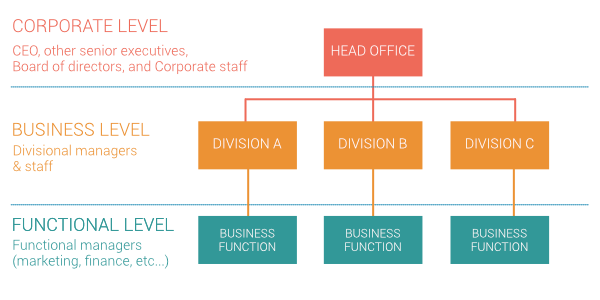
Marketing strategies are general ones. They cover the various ways to promote a business. For example, it could be through traditional advertising methods, such as newspaper ads or billboards.
It could also be through a more modern and effective means, such as the internet. There are many marketing strategies out there, and it depends on the specific needs and wants of the business to define what strategies are relevant to it.
Sales strategies refer to how a business sells products or goods. This is very important in any business, but especially so in a small business. This is also where buying and selling are concerned. There are several ways to sell a product, and they are all part of sales.
Operations strategies to deal with the day-to-day activities of a business. There is also maintenance of the business’s reputation. These are the basic activities of any company, not just a small business. Every company has these, and a company policy usually covers them.
Research and development strategies deal with the research and development of new ideas, products, or services. It includes new knowledge that can be useful to the company.
It is the basis for many innovations and discoveries that may eventually become useful to the customers, employees, or the company itself. Research and development are actually linked to the strategic business unit; therefore, these must be included.
Customer strategies to deal with the specific needs and wants of customers. This is very broad but perhaps the most important aspect of any business. This should include both the product and the service that the customer gets from your company.
This should be able to determine which business units should stay and which should go. In this way, you would determine what kind of business structure would work best for you and your company.
The strategy also encompasses the marketing strategies. This refers to how you target your customers and how you market your company’s products or services.
It should also encompass the sales process of your business. Marketing strategies should be implemented before the actual production of the product begins.
This will help you decide on the right strategies to use in your production. These strategies must be developed according to the type of product that you will be producing.
Sales are one of the most critical processes that a company has to consider. It would help if you were sure that all the necessary sales procedures are properly developed, implemented, and controlled.
You should know how to set up a sales floor properly, and you should be able to ensure that you get enough inventory of the product you are planning to sell. If you want to have a more efficient sales operation in your company, then these are the strategies that you should be focusing on.
Customer research is another part of a good sales strategy. There are so many possible customer groups that you can target through proper research. This will allow you to know which customer segments you should be targeting and which you should avoid.
For example, if you are into selling a product targeted at female entrepreneurs, you should research the needs of these groups so that you will be able to develop a product that will be able to meet their demands.
With proper research, you will be able to determine the factors that will affect your sales, and you will incorporate them into your production process.
The business unit, as mentioned above, is a collection of people who will work together to increase sales and build up their market share. Therefore, this unit should be given the necessary structure and workforce so that it will be able to perform its responsibilities well.
This unit must know what its responsibilities are so that it will be able to effectively coordinate with its team members so that they will be able to achieve its goals in the shortest amount of time possible.
The customer should be your top priority. This should always be the case even when you are into the production process of your product. After all, this is where you will be selling your product.
You do not want to sell something that no one wants. So always make sure that you focus on the people who will ultimately buy your product or service. By doing so, you will be able to improve your production process’s efficiency, and you will be able to give your customers the value they deserve.
Defining business-level strategies can be a lengthy process, but it is imperative. The success of any company depends on using a level of consistency and a solid foundation of strategies that define each company’s unique marketplace and focus.
Every business operates on different levels, and the way each one approaches marketing, building customer relations, and gaining profit differ. However, by using a common foundation or set of strategies, each company can operate successfully and grow to the next level.
Generic Competitive Strategies
Generic competitive strategies refer to the many different strategies that businesses implement to obtain a competitive edge, Retain existing competitive advantage, Capture new markets, Identify, and tap new markets, Offer better value in a product or service, Satisfy increasing customer demands, Provide quality service or solutions, and so on.
It has been seen that businesses adopting generic competitive strategies are far more successful as they have a clear strategy focused on their target market.
On the other hand, those companies adopting ‘designer’ strategies often fail in their core competitive domain. In fact, some of them may be marginally successful in retaining and/or gaining market share, but they cannot translate these into substantial and meaningful competitive advantages.
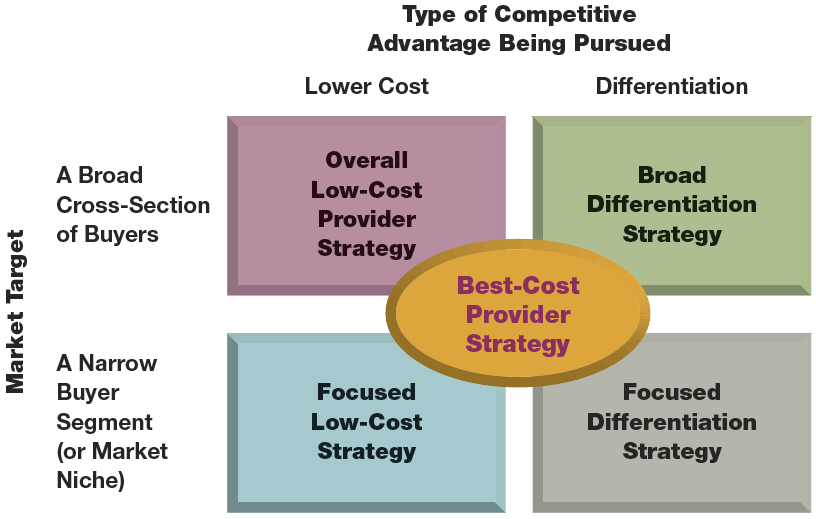
While it is true that generic competitive strategies are easier to build, test, and manage than designer ones, generic strategies still have limitations like any other strategy.
For instance, generic competitive strategies like packaging can easily be copied by competitors who adopt design templates. Similarly, generic strategies like buying leads can also be copied by other firms.
If your target customers are computer savvy, copying their buying habits will reduce your marketing spend considerably and make you appear like a robot.
Why do generic competitive strategies have limitations? Generic strategies are often easy to implement but difficult to sustain over time. Generic strategies tend to assume that competitors are also like you, i.e., looking out for the same set of factors and challenges and adapt their strategies accordingly.
However, many companies ignore that even though their competition is doing well, their strategies may also be doing poorly. Moreover, since strategies need to be tweaked from time to time, it becomes difficult to keep up with changing market conditions.
Secondly, generic competitive strategies assume that the only challenge faced by a company is the quality of the product or service it provides. But one needs to keep in mind that quality alone does not guarantee sales.
One must also keep in mind that customers are not always in the mood to buy. Companies also need to understand that they face competitors who are more disciplined, determined, and focused than those who want to survive.
Thirdly, generic competitive strategies fail to address cultural factors, motivation, psychology, and organization. These factors are much more important than the quality of a product or a service. Therefore, firms need to think carefully about these aspects and incorporate them into their strategic positioning plan.
If a firm fails to address these critical issues, it will have problems in implementing its strategy since it will not consider all possible outcomes. Therefore, a major part of any effective strategic positioning plan includes an understanding of its culture and the motivation of its employees and other stakeholders.
Fourthly, generic strategies fail to take into account the reality of change. The market is notorious for undergoing major changes very quickly, and there is no way that any business can stay on top of these changes.
Companies that do not adapt to these changes are destined to fail. Therefore, generic strategic planning processes focus on maintaining flexibility in their approach to strategy formulation. This is one way of ensuring that GCS will provide a realistic picture of how a company can respond to changing situations.
Fifthly, generic competitive strategies fail to make adequate use of technology. Yet, in the competitive world, technology has become an indispensable tool.
Therefore, firms need to ensure that they have access to the latest tools, techniques, and strategies to gain an advantage over their competitors. Also, they need to make adequate use of this technology in developing new products or services and selling them to customers. Failure to do so will reduce their chance of success.
Generic competitive strategies can be beneficial. They allow firms to respond quickly to changes and to adjust to circumstances. However, they do not allow firms to focus on just a few aspects of strategy.
By combining generic strategies with specific, targeted strategies, they will develop a comprehensive, flexible, and cost leadership strategy that will help them stay ahead of their competitors. As a result, they will be able to stay profitable and stay ahead.
Business Level Strategy Examples
So, what is Business Level Strategy (BLS)? Simply put, BLS is a strategy that business owners use to take their business to the next level. They do this by first identifying opportunities and problems in their market and then exploiting them. To do this, they must first go through the planning and development process of their company. This is where business-level strategy comes into play.
A business-level strategy definition could be summarized as an integrated, blueprint-style description that integrates the policies, strategies, and actions of a business with its target customers and the purpose to be how to deliver superior value to clients while maintaining a strong competitive advantage. Your overall business strategy will define your position in the market and the direction of your future profits.
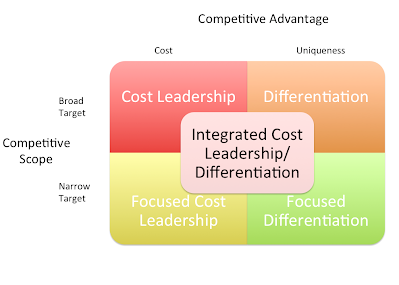
Several business strategy examples illustrate how different companies create differentiation through the use of different tools and techniques. For example, companies such as GE (the world’s largest corporation) create differentiation by using a scale to reduce costs and increase market share.
Companies like Wal-Mart create differentiation by using lower prices than their competitors and increasing market share through brand positioning and extensive distribution channels.
The strategies and tactics used by these two companies highlight the difference between creating profit margins through lower prices and increasing profits through brand positioning and extensive distribution channels.
Wal-Mart can maintain its competitive advantage by using its scale to reduce prices. This strategy of price reduction and discounts are called cost leadership. Its core competency of offering lower prices results from its relentless pursuit of lower prices in every channel of sale.
Wal-Mart’s core competency also includes its distribution channels; it is cheaper to distribute to the greatest number of customers. Cost leadership is thus a major instrument for maintaining superior profits through a focused effort to reduce operating expenses and increase sales volume at the lowest prices.
Focusing on price and reducing operating expenses while maintaining industry average prices is a differentiating feature of this price-focused strategy. This strategy makes this strategy different because industry average prices are the most relevant prices that a business should be pricing compared to its competitors.
This means that Wal-Mart focuses on a lower cost structure to achieve its lowest prices. The strategy also relies on quality goods to ensure that customers are satisfied and willing to spend more.
An important concept of this business strategy is that it requires an organization to think globally even when operational practices remain local. The principles of this strategy require that an organization focus on pricing not just locally but internationally as well.
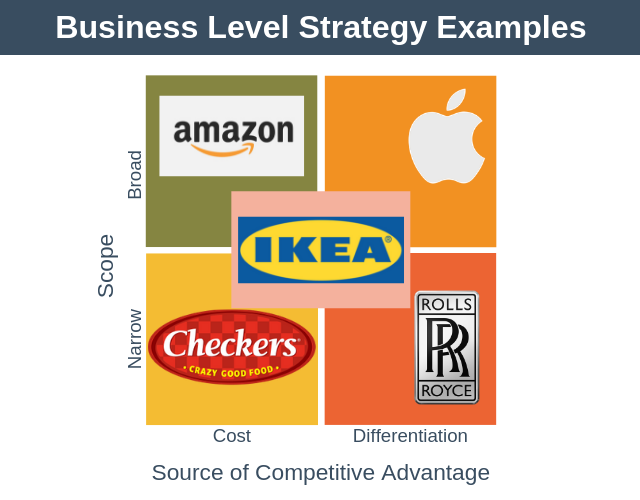
A second important concept in this price-focused business strategy is that it is flexible and can adapt to changing market conditions and consumer preferences.
What this means is that a specific market segment may respond to price reductions differently than other segments. When a specific market segment experiences price increases, this strategy can adjust to meet the changing demands by lowering prices until demand matches the increased supply.
It is therefore flexible, allowing an organization to adjust to changing market conditions and consumer preferences. The strategies thus allow organizations to effectively target markets at different prices, which results in better value and a cost reduction.
On the other hand, a cost-competitive advantage is centered around maintaining the lowest prices to achieve the highest profit margins. Therefore, cost-competitive advantage requires the use of internal and external tools and mechanisms that support low-priced operations.
However, it is more difficult to maintain due to higher start-up costs and higher overheads. As a result, this business-level strategy results in higher fixed costs and lower profits.
The third business-level strategy is focused differentiation, which refers to creating a business segment and associated products or services that provide a distinct advantage over the competition. For example, the beverage industry has established a premium-priced segment dedicated to bottled water that outperforms the competition.
Another good example is the mobile phone segment that enjoys a higher profit margin compared to other segments. Thus, focused differentiation provides organizations with three distinct opportunities. These include (I) an extra segment that solves a problem and (ii) creating a new profitable segment.
There are two basic forms of focused differentiation. These include the first form of specialization, where the main purpose of creating a new niche market segment is to fill a void in the market for a particular product or service.
Examples of this are sports equipment for extreme athletes, second-grade running shoes for the elderly. On the other hand, specialized services may be focused on a specific medical condition, such as cardiac rehabilitation.
The last form is niche markets created to address specific issues related to these markets, such as childhood obesity. In all, specialized business-level strategies are directed towards meeting customers’ needs by tailoring solutions to their unique characteristics.
Business Unit Strategy vs. Corporate Strategy
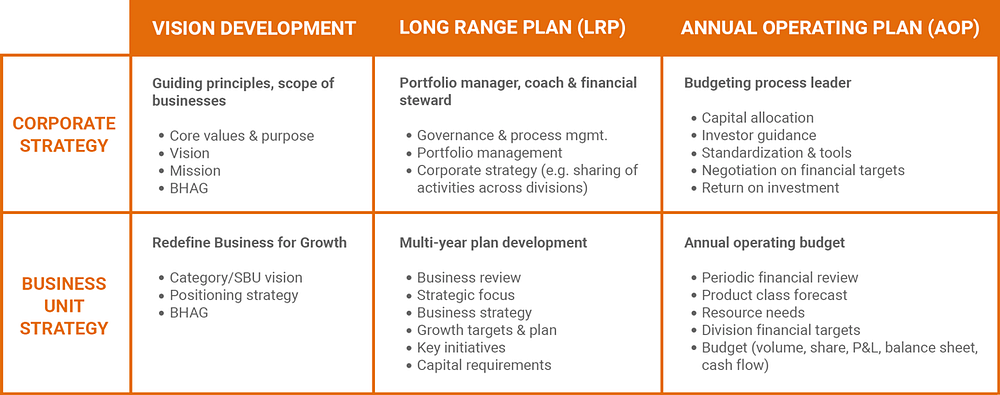
The discussion on the value of a business unit strategy vs. corporate strategy has been ongoing for some time now. There is a clear difference between these two strategic endeavors, and often an argument is made as to which one should be employed depending on the specific circumstances.
Many people who study business are often unable to agree on which approach is correct. However, several examples of strategies can be used to discern which method should be utilized.
When determining whether or not the business or strategy is a more appropriate approach to a company or organization, there are a few things to consider first. First, a good strategy will create a culture within an organization that works well.
The strategy must incorporate goals, objectives, and a way for the objectives to be reached. It should also consider how to measure the success of this strategy.
An effective strategy will also allow employees to know the direction the company is going in. A clear understanding of the goals and objectives will help them remain dedicated and work hard to reach the desired level.
Corporate strategies should always be constructed in terms of the individual components of the business unit. This includes both the financial resources of the corporation and its human resources department.
These two groups play a vital role within the operations of a business, and these two groups must be properly aligned with each other. Both of these groups must also work closely with the other to protect the company’s balance sheet, which can be done through several different strategies.
Each of the above-mentioned strategies may require the use of separate staff members or departments. In some cases, it may even require introducing a new employee to manage a particular section. Regardless of how these strategies are implemented, it is important to monitor and constantly review the success of each of these plans.
This is the only way to ensure that the company is being run as efficiently as possible. When a business is running well, it generally means that the organization has implemented all of the strategies that were outlined within the strategy.
It is important not to jump to a quick decision when debating whether a change in the business-unit strategy is required. Instead, a thorough review of all assets, liabilities, revenues, and costs should be conducted, as detailed as possible, to identify the true state of affairs. Once all of this information has been collected, a well-thought-out business unit strategy can then be developed.
One of the most important things to remember when comparing business unit strategies is that corporate strategy always has precedence over individual strategies.
Therefore, all decisions made regarding company strategy must be approved by the board of directors. In addition, individual managers cannot make decisions without consulting with the other managers and the larger corporate management team.
This means that corporate strategy always wins in the long run. This is especially important when a company is young and still developing a strong market presence. This is because the best businesses are built on long-term solid foundations and, as such, are rarely affected by external factors such as consumer tastes or new technologies that become available immediately.
When a business is mature enough to adjust to changing market conditions, it is much less likely to experience periods of economic downswing or recover from downturns.
As such, both corporate and personal strategies must be carefully considered together to determine the most effective course of action in maintaining profitability. While an effective business unit strategy always outperforms an ineffective one, both are necessary for a successful outcome.
Ultimately, the overall goal of these strategies is to make the business function as smoothly as possible. While it is always important to try to make every aspect of the business unit work together as best as possible, it is sometimes necessary to use different strategies.
When this occurs, it is important to carefully analyze the goals of each strategy and determine which one is the most efficient and effective. Sometimes business owners may need to revise their strategies regularly — at a minimum — to stay on target with their company’s goals.
A corporate strategy will be the main factor that determines which strategy is utilized. However, it is also important to remember that all of them should be reviewed periodically to ensure that they are still working effectively.





